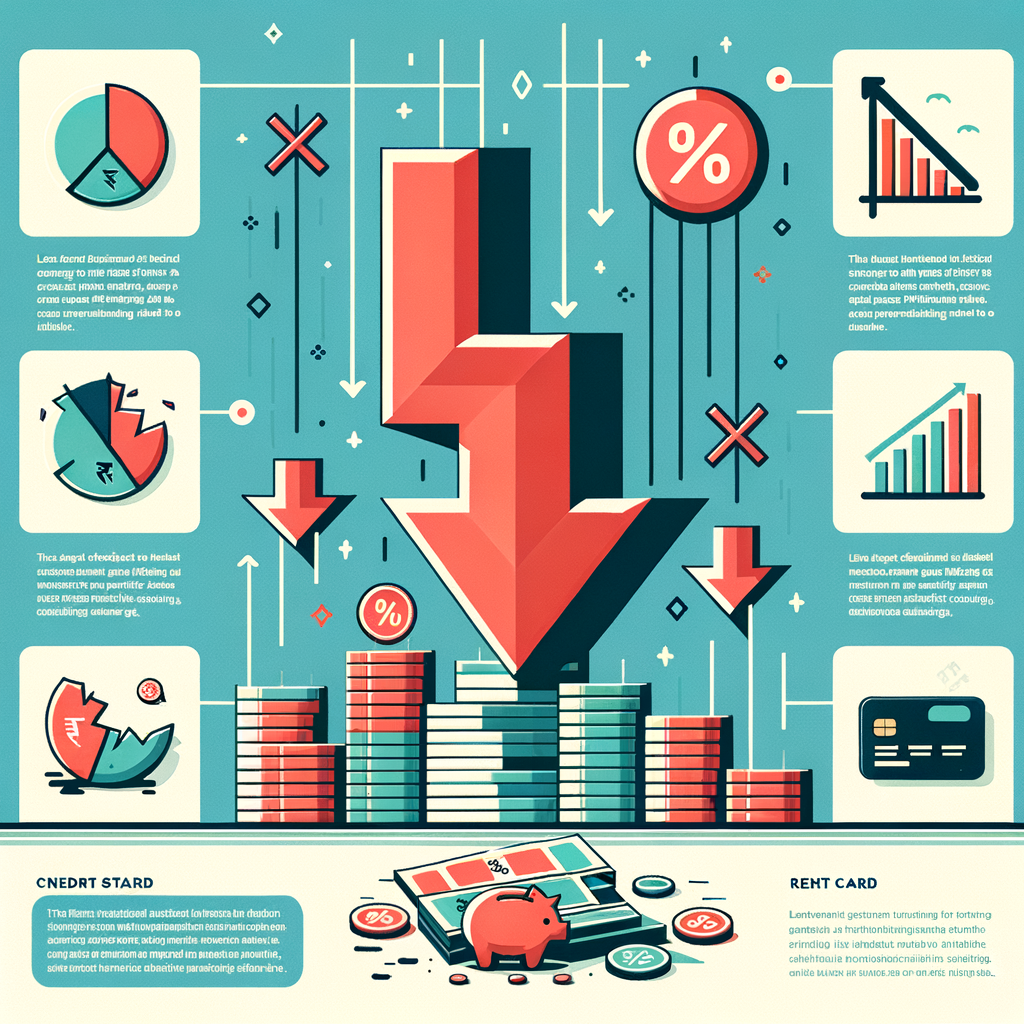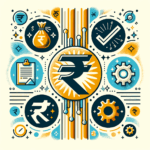The Serious Impact of High-Interest Debt on Your Future Financial Health in India
Every Indian dreams of a secure financial future—buying a first home, funding a child’s prestigious education, or expanding a promising small business. These milestones are the bedrock of a fulfilling life. However, a silent predator lurks in the financial landscape, capable of derailing these aspirations: high-interest debt. The impact of high-interest debt can be devastating, turning dreams into distant mirages. While loans can be valuable tools for growth and opportunity, liabilities like credit card dues and instant personal loans can quickly spiral out of control, creating a heavy burden that affects more than just your bank balance. Understanding the long-term impact of high-interest debt on financial health India is the first critical step towards regaining control. This article will delve deep into the serious financial health implications of debt in India, explore its consequences, and provide you with actionable, expert-backed strategies to manage it effectively and secure your financial well-being.
Understanding High-Interest Debt in the Indian Context
Before we can fight the enemy, we must understand it. High-interest debt is not just any loan; it’s a specific type of liability that grows at an accelerated, often unsustainable, rate. Its defining characteristic is an interest rate that significantly outpaces inflation and the average returns you might expect from safe investments. This means that for every day you carry this debt, it is actively and rapidly diminishing your net worth and future earning potential. In the Indian market, this type of debt often comes disguised as convenience—a quick swipe of a card, an instant loan app approval, or an easy personal loan. However, this convenience comes at a steep price, one that can have a severe high-interest loans impact India and its citizens’ financial futures. Recognizing these sources and understanding what constitutes a “high” rate is fundamental to avoiding the debt trap.
What is Considered a “High” Interest Rate?
In simple terms, if the interest you are paying on a loan is higher than the return you could be earning from a reasonably safe investment like a mutual fund SIP or a fixed deposit, it can be classified as high-interest. Think of it as an “anti-investment” that works against you with the same power that compounding interest works for you in an investment. The cost of this debt actively erodes your wealth. To put this into perspective, here is a comparison of typical interest rate ranges for various loans in India:
| Loan Type | Typical Annual Interest Rate (p.a.) | Classification |
|---|---|---|
| Credit Cards | 18% – 42% | High-Interest |
| Personal Loans (Unsecured) | 11% – 24% | High-Interest |
| Payday/Instant Loan Apps | Can exceed 50% | Extremely High-Interest |
| Car Loans | 9% – 12% | Lower-Interest |
| Home Loans | 8% – 10% | Lower-Interest |
As the table clearly shows, the interest rates on unsecured forms of credit are exponentially higher than those on secured loans like home or car loans, making them particularly dangerous.
Common Sources of High-Interest Debt for Indians
Understanding where this costly debt comes from is key to avoiding it. For most salaried individuals and small business owners in India, it originates from a few common sources that prioritize accessibility over affordability.
- Credit Card Debt: This is the most common trap. Credit cards offer the convenience of revolving credit, but this feature is a double-edged sword. When you pay only the minimum amount due, the remaining balance is carried over and accrues interest at a very high monthly rate. This interest then compounds, meaning you start paying interest on the interest, leading to explosive debt growth that can feel impossible to escape.
- Unsecured Personal Loans: Unlike a home or car loan, a personal loan is not backed by any collateral (an asset the lender can seize if you default). To compensate for this higher risk, banks and NBFCs charge much higher interest rates. These are often marketed for emergencies, weddings, or vacations, tempting individuals to borrow for expenses without a tangible asset to show for it.
- Instant Loan Apps & Payday Loans: A rapidly growing concern in India, these digital platforms offer instant cash with minimal paperwork. However, their convenience masks predatory lending practices. They often charge exorbitant processing fees and sky-high annual interest rates, sometimes exceeding 100% when annualized. Their short repayment windows can force borrowers into a cycle of taking new loans to pay off old ones, creating a devastating spiral.
The Alarming Impact of High-Interest Debt on Your Finances
Carrying high-interest debt is like trying to run a marathon with a heavy backpack full of rocks. It slows you down, exhausts your resources, and makes reaching the finish line of your financial goals incredibly difficult. The consequences are not just financial; they extend to your creditworthiness, your ability to build wealth, and even your mental peace. The long-term high-interest debt consequences India witnesses among its populace include crippled savings rates, delayed life goals, and a perpetual state of financial anxiety. It’s a compounding problem that requires immediate and strategic intervention to prevent it from dictating your entire financial future.
The Debt Spiral: How Compounding Works Against You
We often hear about the magic of compounding in investments, where your earnings generate their own earnings over time. With high-interest debt, this same powerful force works in reverse, but with much more destructive speed. Imagine a common scenario: you have a ₹1,00,000 credit card bill with an annual interest rate of 36% (or 3% per month). If the minimum payment is 5% of the balance (₹5,000), a staggering ₹3,000 of that payment goes straight to paying the monthly interest. Only ₹2,000 actually reduces your principal amount. The next month, you’re charged interest on the remaining ₹98,000. This slow reduction in principal means you could be stuck paying off this debt for decades, ultimately paying back several times the original amount you borrowed. This is the debt spiral, and it is designed to keep you indebted for as long as possible.
Damaging Your CIBIL Score and Future Creditworthiness
In India, your CIBIL score is your financial passport. This three-digit number, ranging from 300 to 900, determines your ability to secure future loans for life’s biggest purchases—a home, a car, or capital for your business. High-interest debt wreaks havoc on this score in two primary ways. First, it often leads to a high credit utilisation ratio (the amount of credit you’ve used compared to your total credit limit). Lenders view a ratio above 30% as a sign of financial stress. Second, when debt becomes unmanageable, the risk of missing or making late payments increases dramatically. Even a single late payment can slash your CIBIL score significantly. A low score means future loan applications could be rejected, or you might be offered loans at even higher interest rates, perpetuating the cycle of costly debt. You can check your score and report on the official CIBIL website.
Delaying Major Life Goals and Wealth Creation
One of the most tragic effects of debt on future finances India experiences is the profound opportunity cost it creates. Every single rupee you pay towards high-interest charges is a rupee that you cannot save or invest. It’s a rupee that isn’t going into a mutual fund SIP, a Public Provident Fund (PPF) account, or being reinvested into your small business for growth. This directly delays or even prevents you from achieving major life goals. Your dream of buying a house is pushed back because you can’t save for a down payment. Your retirement planning is stalled because your income is diverted to servicing debt. The goal of achieving financial independence becomes a distant fantasy. In essence, you are spending your present income to pay for your past, leaving nothing left to build your future.
Actionable Debt Management Strategies for Indian Consumers
Recognizing the problem is the first step, but taking decisive action is what truly matters. Breaking free from the clutches of high-interest debt is not easy, but it is absolutely achievable with a clear and disciplined plan. The following strategies provide a structured approach to systematically dismantle your debt and regain control of your finances. These are proven debt management strategies for Indian consumers that focus on clarity, momentum, and financial efficiency. By choosing a method that aligns with your financial situation and psychological needs, you can begin the journey towards a debt-free life with confidence.
Step 1: Acknowledge and Assess Your Debt
You cannot solve a problem you don’t fully understand. The very first step is to get a crystal-clear picture of your total debt situation. This means moving beyond anxiety and facing the numbers head-on. Create a simple spreadsheet or use a notebook to list every single one of your debts. For each debt, you must list the following four details:
- Lender: (e.g., HDFC Bank Credit Card, Bajaj Finserv Personal Loan)
- Outstanding Amount: The total principal you still owe.
- Interest Rate (APR): The Annual Percentage Rate. This is the most crucial number.
- Minimum Monthly Payment: The EMI or minimum amount due each month.
This “debt inventory” will be your map. It will show you exactly where you stand and help you identify the most destructive debts that need to be tackled first.
Step 2: Choose Your Repayment Method
Once you have your debt inventory, you can choose a strategic repayment method. The two most popular and effective methods are the Debt Snowball and the Debt Avalanche.
- The Debt Snowball Method: With this method, you continue to make minimum payments on all your debts, but you throw every extra rupee you have at the debt with the smallest outstanding balance, regardless of its interest rate. Once that smallest debt is paid off, you “roll” the payment you were making on it into the payment for the next smallest debt. This method is psychologically powerful; the quick wins from clearing smaller debts build momentum and motivation to keep going.
- The Debt Avalanche Method: This is the most financially efficient method. You again make minimum payments on all debts, but you focus all your extra funds on the debt with the highest interest rate (APR). Once that is cleared, you move to the debt with the next-highest interest rate. While it might take longer to get your first “win,” this method saves you the most money in interest payments over the long term.
Step 3: Consider Debt Consolidation Options
If you are juggling multiple high-interest debts, consolidation can be a powerful tool to simplify payments and reduce your interest burden. This involves taking out a new, single loan to pay off all your other high-interest liabilities.
- Balance Transfer: Many banks offer credit cards with a 0% introductory APR for a period of 6 to 12 months on balance transfers. You can transfer the outstanding balances from your high-interest credit cards to this new card. This gives you a crucial interest-free window to aggressively pay down the principal without it growing. Important: Always check for the one-time balance transfer fee, which is typically 1-3% of the amount being transferred.
- Consolidation Loan: This involves taking out a new, fixed-rate personal loan at a much lower interest rate than your credit cards or other unsecured loans. You use the funds from this loan to pay off all your other debts immediately. This leaves you with just one manageable EMI to pay each month, making your finances simpler and saving you a significant amount in interest.
The Role of Professional Financial Planning and Debt Management
While self-managed strategies are effective, navigating complex debt situations, especially when balancing business cash flow, tax liabilities, and personal financial goals, can be overwhelming. This is where professional guidance becomes invaluable. Engaging with a financial expert can provide you with a structured, objective, and personalized approach, ensuring that your efforts are optimized for the best possible outcome. At TaxRobo, we understand that financial planning and debt are deeply intertwined. A holistic plan that addresses both is essential for managing debt for financial stability India. Our experts go beyond simple repayment advice to create a comprehensive roadmap that aligns your debt-free journey with your long-term wealth creation goals.
Building a Custom Roadmap to Financial Freedom
Cookie-cutter solutions rarely work in personal finance. A salaried individual’s financial reality is vastly different from that of a small business owner. This is why a personalized approach is crucial. TaxRobo’s experts begin by conducting a thorough analysis of your complete financial picture—your income streams, expenses, existing assets, liabilities, and future goals. Based on this deep dive, we create a custom debt repayment plan tailored specifically to your situation. This plan prioritizes which debts to tackle first, suggests the most suitable consolidation options, and identifies areas in your budget where funds can be redirected towards debt repayment without compromising your essential needs. This professional guidance ensures you are on the fastest and most efficient path to becoming debt-free.
Integrating Debt Management with Tax and Business Planning
True financial health is about synergy. Your debt management strategy should not exist in a vacuum; it must be integrated with your broader financial life, including tax planning and business management.
- For Salaried Individuals: Our experts can help you balance your debt repayment goals with your tax-saving investments. We can advise on how to strategically utilize instruments like ELSS, PPF, and NPS to save on taxes, freeing up more disposable income that can then be used to accelerate your debt payments.
- For Small Business Owners: High-interest debt can cripple a growing business, and understanding the role does debt mismanagement play in business failure is critical for survival. TaxRobo’s integrated accounting, bookkeeping, and GST compliance services are designed to improve your business’s cash flow management. By optimizing your financial operations and ensuring regulatory compliance, we help you unlock funds within your business that can be used to clear high-interest business or personal loans faster, strengthening both your company’s and your personal financial foundation.
Conclusion
The journey out of high-interest debt is a marathon, not a sprint, but it is a race you can win. The severe impact of high-interest debt extends far beyond your bank statement, affecting your CIBIL score, your ability to create wealth, and your overall mental peace. It silently mortgages your future to pay for your past. However, by understanding how it works, acknowledging its presence, and implementing a strategic repayment plan, you can break the chains. Whether you choose the motivational Snowball method, the efficient Avalanche method, or a professional consolidation strategy, the key is to start today. Breaking free from high-interest debt is the single most powerful step you can take towards building a secure and prosperous financial future for yourself and your family.
Feeling overwhelmed by debt? You don’t have to manage it alone. Schedule a free consultation with a TaxRobo financial expert today and take the first concrete step towards a debt-free life.
Frequently Asked Questions (FAQs)
1. Is it better to pay off my high-interest debt or invest my money?
For most people, paying off high-interest debt is the smarter financial move. Clearing a credit card debt with a 30% interest rate is equivalent to getting a 30% guaranteed, tax-free return on your money. No investment in the market can consistently and safely offer that kind of return. It’s almost always financially wiser to clear any debt with an interest rate above 10-12% before making new, non-essential investments.
2. Will taking a debt consolidation loan hurt my CIBIL score?
Initially, applying for a new consolidation loan will result in a hard inquiry on your credit report, which might cause a small, temporary dip in your CIBIL score. However, this is a short-term effect. In the long run, successfully managing and paying off the consolidation loan will have a very positive impact. It helps by reducing your credit utilisation ratio, simplifying your payments (reducing the risk of missed payments), and demonstrating responsible credit behaviour, all of which will significantly improve your CIBIL score over time.
3. What is the fastest way to get out of credit card debt in India?
The fastest way is a multi-pronged attack. First, adopt the Debt Avalanche method and aggressively target the credit card with the highest interest rate. Second, ruthlessly cut non-essential expenses from your budget and look for ways to temporarily increase your income (freelance work, overtime) to make payments that are much larger than the minimum amount due. Finally, explore a 0% balance transfer credit card. This can provide an interest-free period where 100% of your payment goes towards reducing the principal, dramatically accelerating your progress.
4. How can small business owners avoid falling into high-interest debt traps?
Small business owners can protect themselves by practicing strict financial discipline. Key strategies include:
- Maintaining separate finances: Never mix personal and business accounts. Use a business credit card for business expenses only.
- Creating a detailed business budget: Track every rupee of income and expenditure to manage cash flow effectively.
- Building an emergency fund: A cash reserve can help the business weather unexpected expenses without resorting to high-interest loans.
- Exploring secured financing: For business expansion, explore options like MSME loans from government schemes or secured business loans, which offer much lower interest rates than personal loans or credit cards. You can find valuable resources on the MSME Ministry website.



